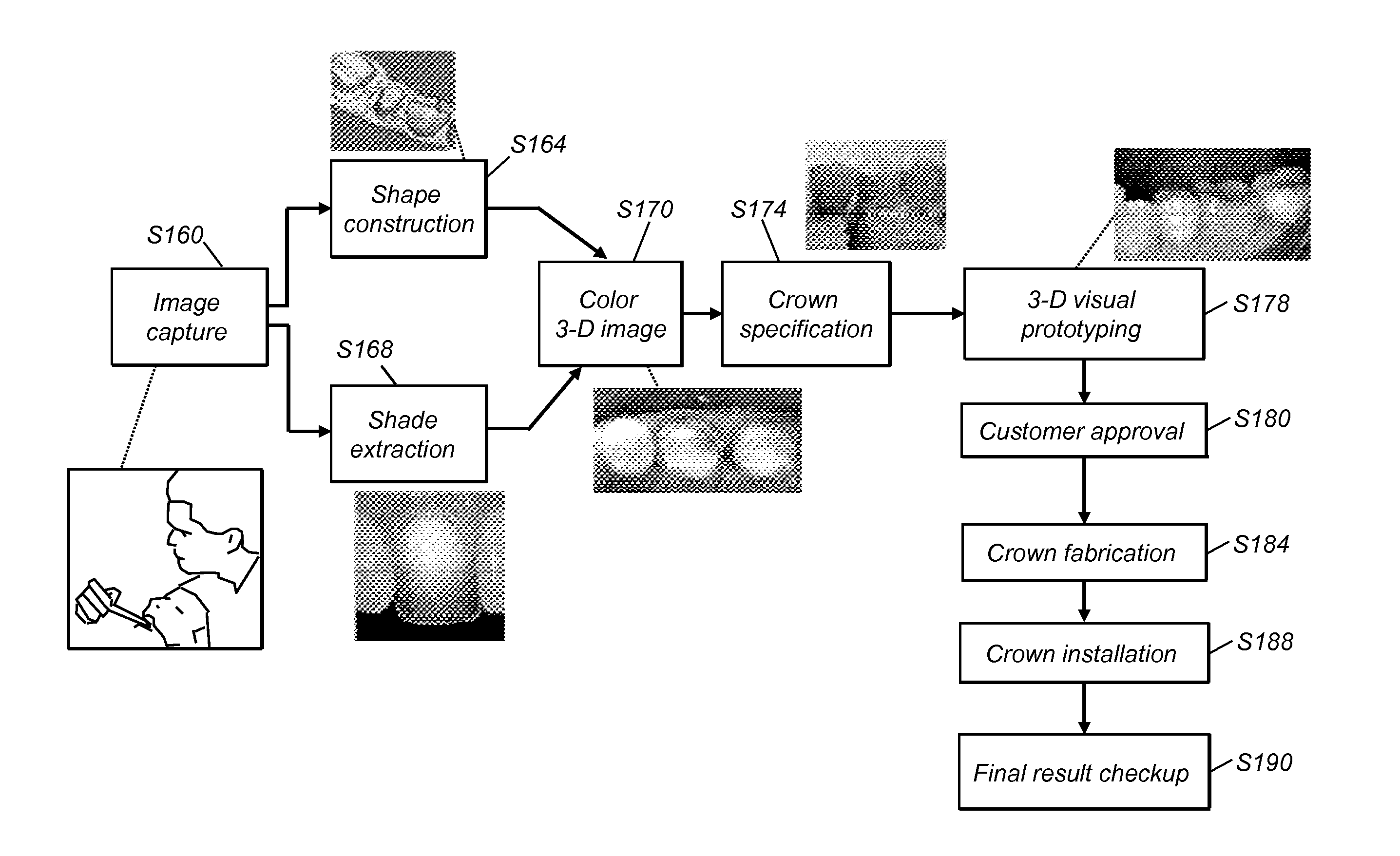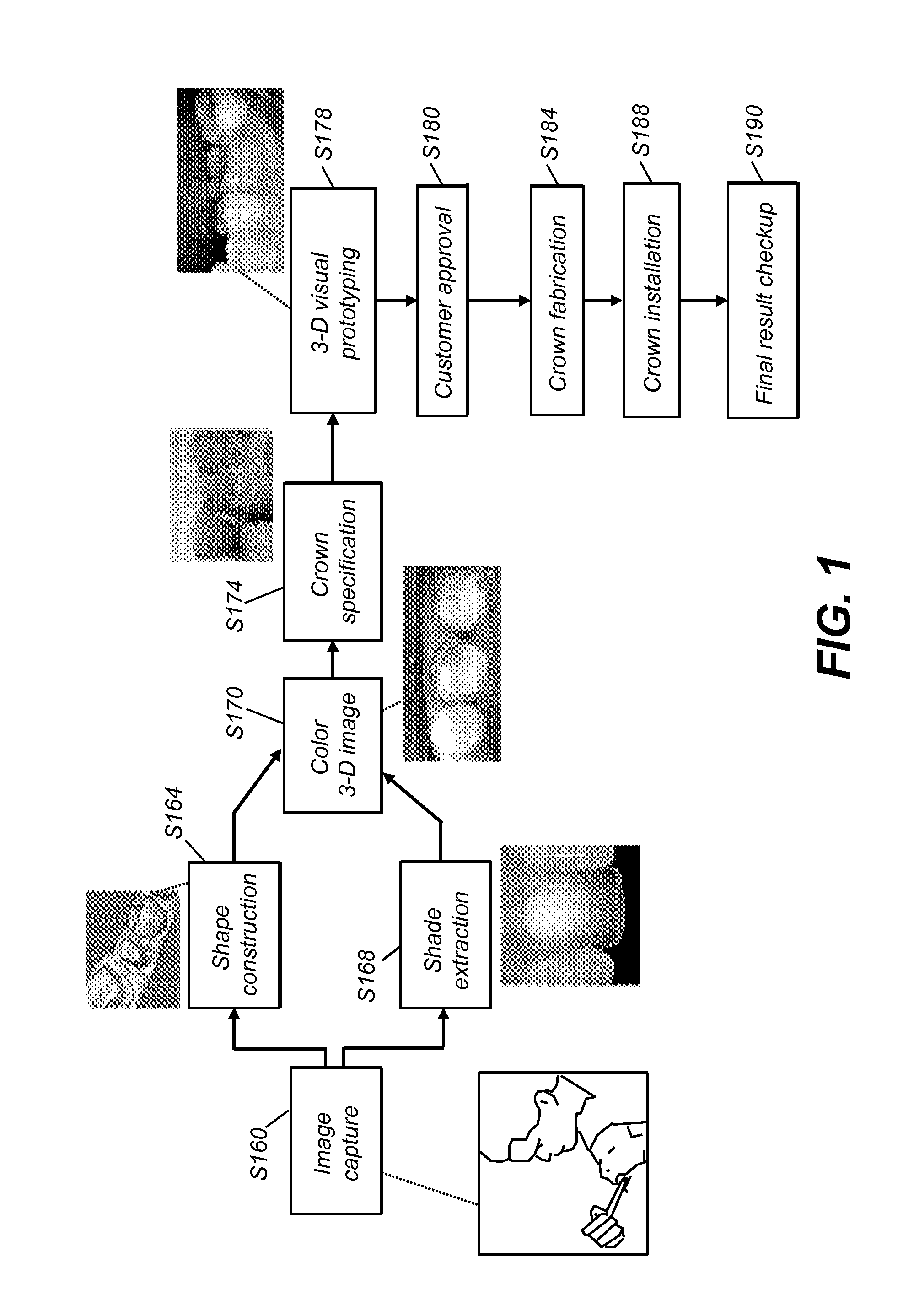Apparatus for dental surface shape and shade imaging
a technology of surface shape and shade, applied in the field of diagnostic imaging, can solve the problems of difficult registration or correlation of shade information to shape information, human error in color shade decisions in particular, and preventing effective use of fringe projection imaging of teeth, etc., to achieve the effect of improving the imaging of tooth surfaces, obtaining tooth shade information, and reducing costs
- Summary
- Abstract
- Description
- Claims
- Application Information
AI Technical Summary
Benefits of technology
Problems solved by technology
Method used
Image
Examples
Embodiment Construction
[0035]Reference is made to U.S. patent application Ser. No. 12 / 424,562 entitled “Dental Surface Imaging Using Polarized Fringe Projection” (Liang), filed 16 Apr. 2009, and commonly assigned.
[0036]Figures provided herein are given in order to illustrate key principles of operation and component relationships along their respective optical paths according to the present invention and are not drawn with intent to show actual size or scale. Some exaggeration may be necessary in order to emphasize basic structural relationships or principles of operation. Some conventional components that would be needed for implementation of the described embodiments, such as support components used for providing power, for packaging, and for mounting and protecting system optics, for example, are not shown in the drawings in order to simplify description of the invention itself. In the drawings and text that follow, like components are designated with like reference numerals, and similar descriptions c...
PUM
 Login to View More
Login to View More Abstract
Description
Claims
Application Information
 Login to View More
Login to View More - R&D
- Intellectual Property
- Life Sciences
- Materials
- Tech Scout
- Unparalleled Data Quality
- Higher Quality Content
- 60% Fewer Hallucinations
Browse by: Latest US Patents, China's latest patents, Technical Efficacy Thesaurus, Application Domain, Technology Topic, Popular Technical Reports.
© 2025 PatSnap. All rights reserved.Legal|Privacy policy|Modern Slavery Act Transparency Statement|Sitemap|About US| Contact US: help@patsnap.com



